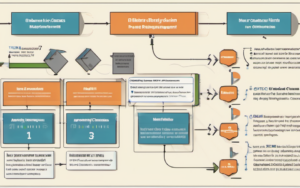Blockchain technology has revolutionized various industries, from finance to healthcare, with its potential to enhance transparency, security, and efficiency. However, alongside these benefits, the concept of Blockchain Privacy has sparked significant debate. While often touted as a solution for anonymity, the reality is more nuanced. Understanding the intricacies of blockchain and privacy is crucial to navigating this complex landscape.
Blockchain and Privacy: A Complex Relationship
The allure of blockchain lies in its ability to create a transparent and immutable record of transactions. This transparency, however, raises concerns about privacy, particularly in an era where data protection is paramount.
The Promise of Anonymity
Blockchain technology is often perceived as a haven for anonymity, offering users a way to transact without revealing their identities. This perception stems from the use of pseudonymous addresses, where users are identified by unique, alphanumeric strings rather than personal information.
The Reality of Pseudonymity
While blockchain technology can facilitate pseudonymous transactions, it doesn’t guarantee anonymity. The public nature of the blockchain means that anyone can view the history of transactions associated with a particular address, making it possible to track activity and potentially link it back to an individual.
Understanding Blockchain’s Privacy Mechanisms
Despite the challenges, blockchain technology incorporates several mechanisms that aim to enhance privacy.
Cryptographic Hashing
Blockchain utilizes cryptographic hashing to convert sensitive data into unique, irreversible codes. This process ensures that transaction details remain secure and prevents tampering.
Public and Private Keys
Each user on a blockchain network possesses a pair of keys: a public key, which is shared and used to receive transactions, and a private key, which remains confidential and grants access to funds. This key-based system enables secure communication and asset control.
Decentralization and Distributed Ledgers
Blockchain’s decentralized nature, where data is stored across multiple nodes, makes it more difficult for a single entity to control or manipulate information. This distributed ledger technology strengthens data integrity and enhances privacy by reducing the risk of unauthorized access.
Challenges to Privacy on Blockchain
Despite the technological safeguards, several challenges impede true anonymity on blockchain networks.
Publicly Accessible Transactions
The inherent transparency of blockchain networks means that all transactions are publicly visible. While individual identities may be obscured, the flow of funds and the associated addresses can be tracked and analyzed.
Data Analysis and Correlation
Even with pseudonymous addresses, sophisticated data analysis techniques can be used to correlate transactions and identify patterns that reveal user identities. This raises concerns about privacy breaches and potential misuse of information.
Regulation and Compliance
Governments and regulatory bodies are increasingly scrutinizing blockchain activities, demanding greater transparency and compliance with data protection regulations. These regulations can impact the privacy features of blockchain applications.
Privacy-Enhancing Technologies on Blockchain
To address privacy concerns, researchers and developers are exploring innovative technologies that can enhance privacy on blockchain networks.
Zero-Knowledge Proofs
Zero-knowledge proofs allow users to prove knowledge of a fact without revealing the actual information itself. These proofs can be used to verify identities or transaction details while preserving privacy.
Homomorphic Encryption
Homomorphic encryption enables computations to be performed on encrypted data without decryption. This technology can be used to process sensitive information on blockchain networks while safeguarding privacy.
Privacy Coins
Privacy coins, such as Monero and Zcash, incorporate privacy-enhancing features into their blockchain protocols. These coins employ techniques like ring signatures and zero-knowledge proofs to mask transaction details and sender/receiver identities.
The Future of Blockchain and Privacy
The future of blockchain and privacy hinges on finding a balance between transparency and anonymity.
Balancing Transparency and Anonymity
Achieving a balance between transparency and anonymity is critical for blockchain adoption. This requires careful consideration of privacy-enhancing technologies, regulatory frameworks, and user education.
Emerging Privacy-Focused Solutions
The development of privacy-focused solutions, such as privacy-preserving smart contracts and data anonymization techniques, will play a crucial role in shaping the future of blockchain privacy.
The Role of Regulation and Education
Clear and effective regulations are necessary to ensure responsible use of blockchain technology and protect user privacy. Educating users about blockchain technology and its potential privacy implications is vital for empowering informed decision-making.
The journey towards ensuring privacy on blockchain is ongoing. By embracing innovation, fostering collaboration, and promoting responsible use, we can harness the power of blockchain technology while safeguarding individual privacy rights.




